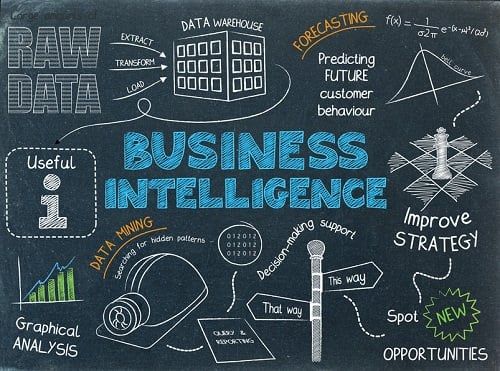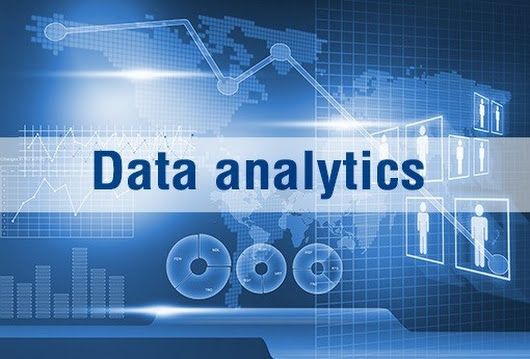The confusion between business intelligence and data analytics runs deep in most organizations. Teams use these terms interchangeably, budget allocations blur the lines, and professionals often find themselves doing work that spans both areas without clear role definitions. Understanding the fundamental differences between BI and data analytics is crucial for building effective data strategies and choosing the right career path.

The Historical Context and Evolution
Business intelligence emerged in the 1960s as a way to transform raw data into meaningful information for business decision-making. Traditional BI focused on structured reporting, dashboards, and standardized metrics that helped managers monitor business performance. It was primarily about answering “what happened” and “when did it happen.”
Data analytics evolved more recently as computing power increased and statistical methods became more accessible. While BI focused on reporting historical data, data analytics expanded into predictive and prescriptive territory, asking “why did it happen” and “what will happen next.” This evolution represents a shift from passive reporting to active investigation.
The Operational vs Investigative Divide
Business intelligence operates as an information delivery system. BI professionals build infrastructure that consistently delivers the same metrics to stakeholders on a regular schedule. The focus is on reliability, accessibility, and standardization. A BI system might generate weekly sales reports, monthly financial dashboards, or quarterly performance scorecards.

Data analytics functions as an investigation and discovery process. Data analysts dive into data to answer specific questions, explore anomalies, and uncover insights that weren’t previously known. The work is more exploratory and less standardized → each analysis might use different methods and produce different types of outputs.
Technology Stack and Tools
The technology ecosystems for BI and data analytics have distinct characteristics, though they increasingly overlap.
Business Intelligence relies on:
- ETL tools for data extraction and transformation
- Data warehouses for structured data storage
- Reporting platforms like Power BI, Tableau, or Cognos
- OLAP cubes for multidimensional analysis
- Standardized dashboards and scorecards
- Automated report generation and distribution systems
Data Analytics utilizes:
- Statistical software like R, Python, or SAS
- Data mining and machine learning libraries
- Advanced visualization tools for exploratory analysis
- Database query tools for ad-hoc data exploration
- Experimental design and hypothesis testing frameworks
- Flexible analytical environments like Jupyter notebooks
The Audience and Consumption Patterns
BI serves a broad organizational audience with standardized information needs. Executives check dashboards for key performance indicators, managers review departmental reports, and operational staff monitor daily metrics. The information consumption is routine and predictable.
Data analytics typically serves specific stakeholders with particular questions or problems. A marketing manager might request customer segmentation analysis, or a product team might need user behavior insights. The consumption is episodic and driven by specific business needs rather than routine monitoring.
Process Methodology and Workflow
Business intelligence follows structured, repeatable processes. Data flows through established ETL pipelines, reports are generated on predetermined schedules, and metrics follow consistent definitions across the organization. The emphasis is on reliability and consistency rather than discovery.
Data analytics employs more flexible, iterative methodologies. Analysts start with hypotheses, explore data to test assumptions, and adapt their approach based on findings. The process is more scientific and experimental, with significant time spent on data exploration and validation.
Skills and Role Requirements
Business Intelligence professionals typically need:
- ETL development and data modeling expertise
- Knowledge of data warehouse architectures
- Proficiency with BI platforms and reporting tools
- Understanding of business processes and requirements
- Project management skills for BI implementations
- Strong attention to detail for maintaining data quality
Data Analytics professionals require:
- Statistical analysis and hypothesis testing skills
- Programming abilities in analytical languages
- Critical thinking and problem-solving capabilities
- Domain expertise to interpret results correctly
- Communication skills to translate findings into insights
- Curiosity and an investigative mindset for data exploration
Value Creation and Business Impact
BI creates value through operational efficiency and consistent information access. Well-designed BI systems reduce the time spent gathering data, ensure everyone works from the same metrics, and enable faster decision-making through readily available information. The value is often measured in time savings and improved operational effectiveness.
Data analytics creates value through new insights and improved decision-making. Successful analytical projects can identify new revenue opportunities, reduce costs through optimization, or improve customer experiences through better understanding of behavior patterns. The value is typically measured in business outcomes rather than operational efficiency.
Implementation Complexity and Timeline
BI implementations tend to be large, structured projects with predictable timelines. Building data warehouses, implementing ETL processes, and deploying reporting platforms requires significant upfront investment and careful project management. The timeline is measured in months or years, but the result is a sustainable system.
Data analytics projects are typically smaller and more agile, with faster turnaround times. Individual analyses might be completed in days or weeks, though building analytical capabilities across an organization takes time. The approach is more iterative and experimental.
Data Requirements and Quality Standards
Business intelligence requires highly structured, clean data with consistent definitions and formats. BI systems depend on data quality and standardization to produce reliable reports. Significant effort goes into data governance, master data management, and ensuring consistency across systems.
Data analytics can work with messier, less structured data and often involves cleaning and preparing data as part of the analytical process. While data quality is important, analysts are trained to work with imperfect data and can often extract insights despite quality issues.
Organizational Positioning
BI typically sits within IT or finance organizations, focusing on infrastructure and operational support. BI teams are often measured on system uptime, report accuracy, and user satisfaction with information delivery. The role is more service-oriented and infrastructure-focused.
Data analytics usually resides closer to business functions, either within specific departments or as part of centralized analytical teams. Analytics professionals are measured on insight quality, business impact, and their ability to answer strategic questions. The role is more consultative and insight-focused.
When to Invest in Each Capability
Prioritize Business Intelligence when:
- Your organization lacks consistent reporting and metrics
- Decision-makers spend too much time gathering basic information
- Different departments use conflicting definitions for key metrics
- You need regulatory reporting or compliance documentation
- Operational monitoring and performance tracking are priorities
Prioritize Data Analytics when:
- You have good basic reporting, but need deeper insights
- Strategic questions require investigation beyond standard metrics
- You want to predict future outcomes or optimize processes
- Competitive advantage depends on data-driven decision-making
- You have specific business problems that data could help solve
The Integration Strategy
The most effective organizations don’t treat BI and data analytics as competing approaches but as complementary capabilities. BI provides the foundation of reliable, consistent information that analysts need for their investigations. Analytics provides the insights and discoveries that help organizations determine what new metrics and reports they should be tracking.
A mature data strategy typically starts with solid BI foundations → ensuring data quality, consistent definitions, and reliable reporting. Once this foundation is established, analytics capabilities can be layered on top to drive deeper insights and more sophisticated decision-making.
Career Considerations
BI careers often appeal to people who enjoy building systems, working with technology infrastructure, and ensuring reliable information delivery. The work is more structured and project-oriented, with clear deliverables and success metrics. Career progression often leads to data architecture, IT management, or enterprise data roles.
Analytics careers attract individuals who enjoy investigation, problem-solving, and collaborating directly with business stakeholders to address strategic questions. The work is more varied and research-oriented, with outcomes that are sometimes uncertain. Career progression often leads to data science, strategic analysis, or business consulting roles.
The Future Convergence
The lines between BI and data analytics continue to blur as technology evolves. Modern BI platforms include analytical capabilities, while analytics tools incorporate reporting and dashboard features. Self-service analytics democratizes analytical capabilities, while automated insights bring analytical thinking into traditional BI workflows.
However, the fundamental distinction between systematic information delivery and investigative analysis remains a relevant one. Organizations need both capabilities, and professionals benefit from understanding which side of this spectrum aligns with their interests and career goals.
Success in today’s data-driven environment often requires understanding both perspectives → how to build reliable information systems and how to extract insights from data. Whether you focus on BI or analytics, appreciating the complementary nature of these approaches will make you more effective in your role and more valuable to your organization.